The Feedly Cybersecurity API
Feedly for Cybersecurity includes an API that allows cybersecurity teams to share the threat intelligence they collect in Feedly with other applications.

The Feedly Cybersecurity API
Feedly for Cybersecurity includes an API that allows cybersecurity teams to share the threat intelligence they collect in Feedly with other applications

150,000 cybersecurity professionals use Feedly to collect intelligence about the evolving threat landscape.
Threat research and collection are one step of the overall threat intelligence, investigation, and response.
The Feedly Cybersecurity API allows security teams to easily integrate the insights they collect in Feedly into other systems and applications. Some teams use the API to extract data about threats and vulnerabilities and feed larger machine learning threat-prioritization models. Some teams use the API to create Jira tickets based on the content of the Feedly boards to make sure that critical vulnerabilities are reviews and patched in a timely manner.
Access to the Feedly API (up to 200,000 requests per month) is an add-on included in the Enterprise Edition of the Feedly for Cybersecurity package.
In this tutorial, we will show you how to use the Feedly API to access the content of your security feeds, your boards, and your AI Feeds.
Authentication
When you subscribe to Feedly for Cybersecurity Enterprise Edition, we will provide you with a special Feedly access token associated with your account. That token will allow you to access the content of your feeds, boards, and priorities and perform up to 200,000 requests per month.
Articles as JSON
The JSON representation of an article combines some of the open-source content included on the RSS or on the website, CVE/CVSS/Exploit information aggregated from vulnerability and exploit databases, as well as the results of the Feedly AI cybersecurity models.
The title, content, and visual information give you access to the core of the content of the articles:
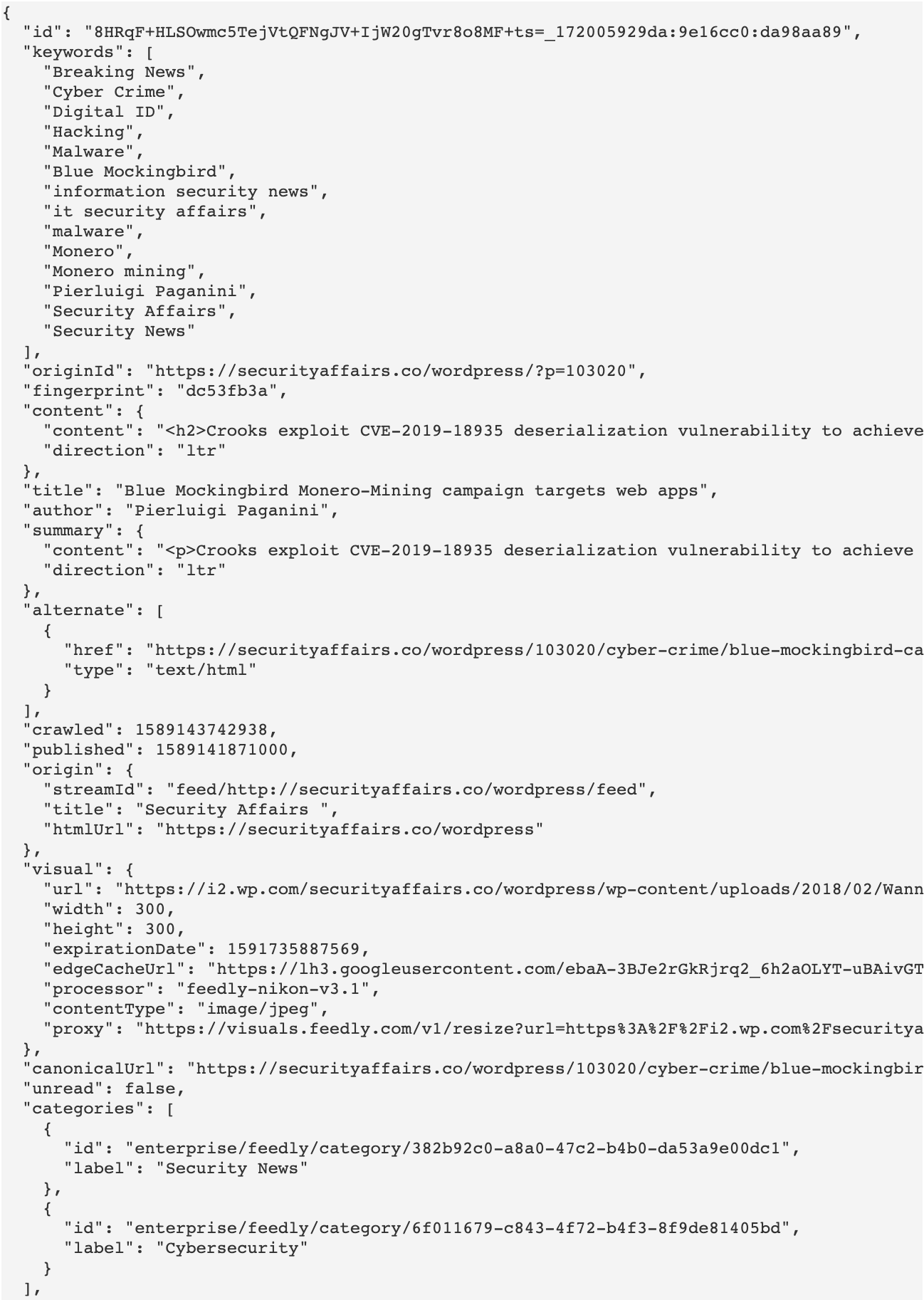
The commonTopics array represents Feedly AI’s topic classification. The entities represent CVEs, products, or companies Feedly AI has identified in the article. The CVE entity includes CVSS and exploits information extracted from vulnerability databases.
The estimatedCVSS represents the result of Feedly AI’s CVSS scoring model. This is useful for zero-days and articles which do not mention a CVE explicitly. In those cases, Feedly AI reads the content of the article and computes an approximative CVSS score based on the terminology used in the article or the tweet.
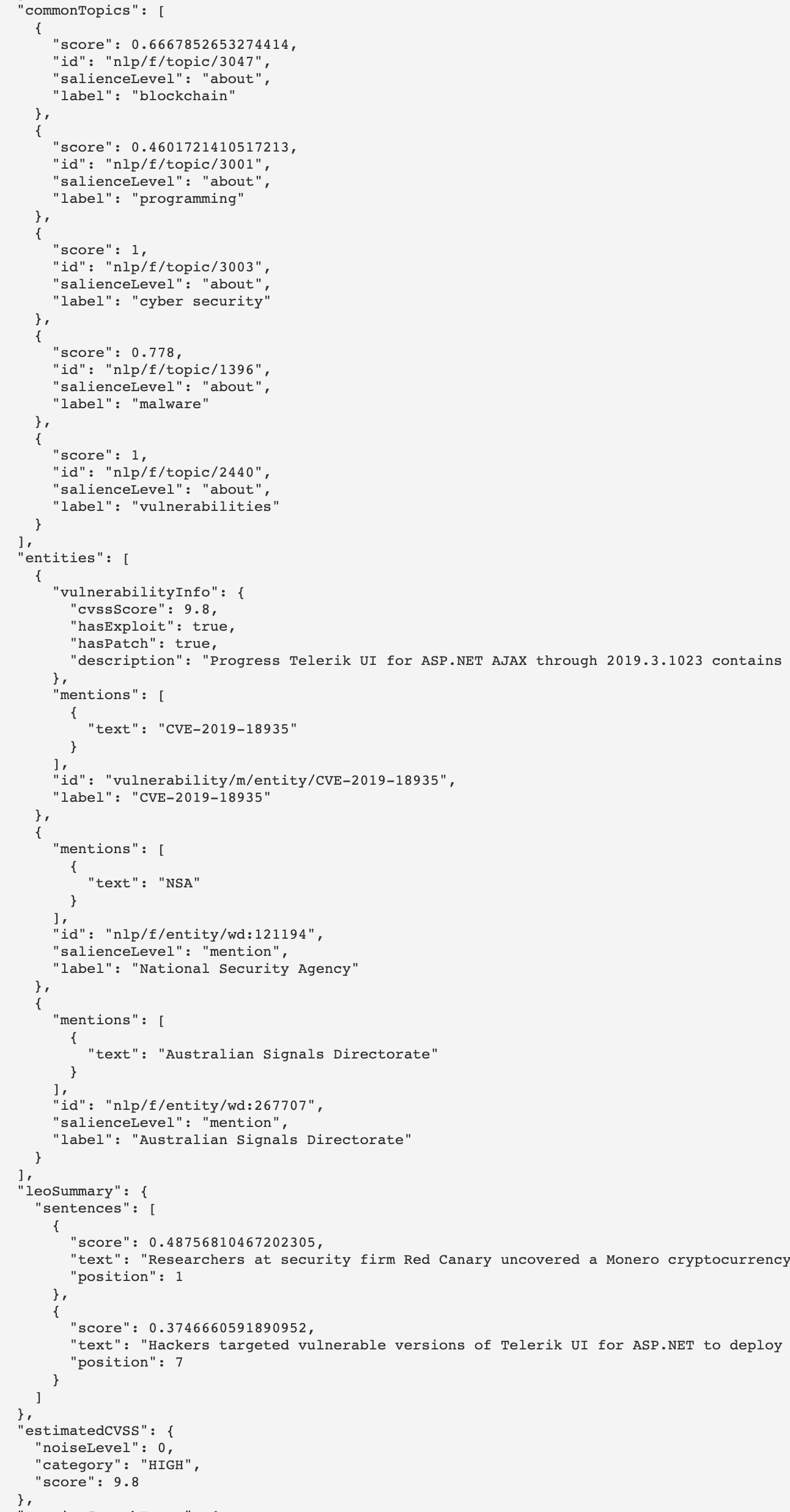
Pro tip: When you have an article open in the Feedly web application, you can use the Shift+D keyboard shortcut to see and inspect the JSON of the article.
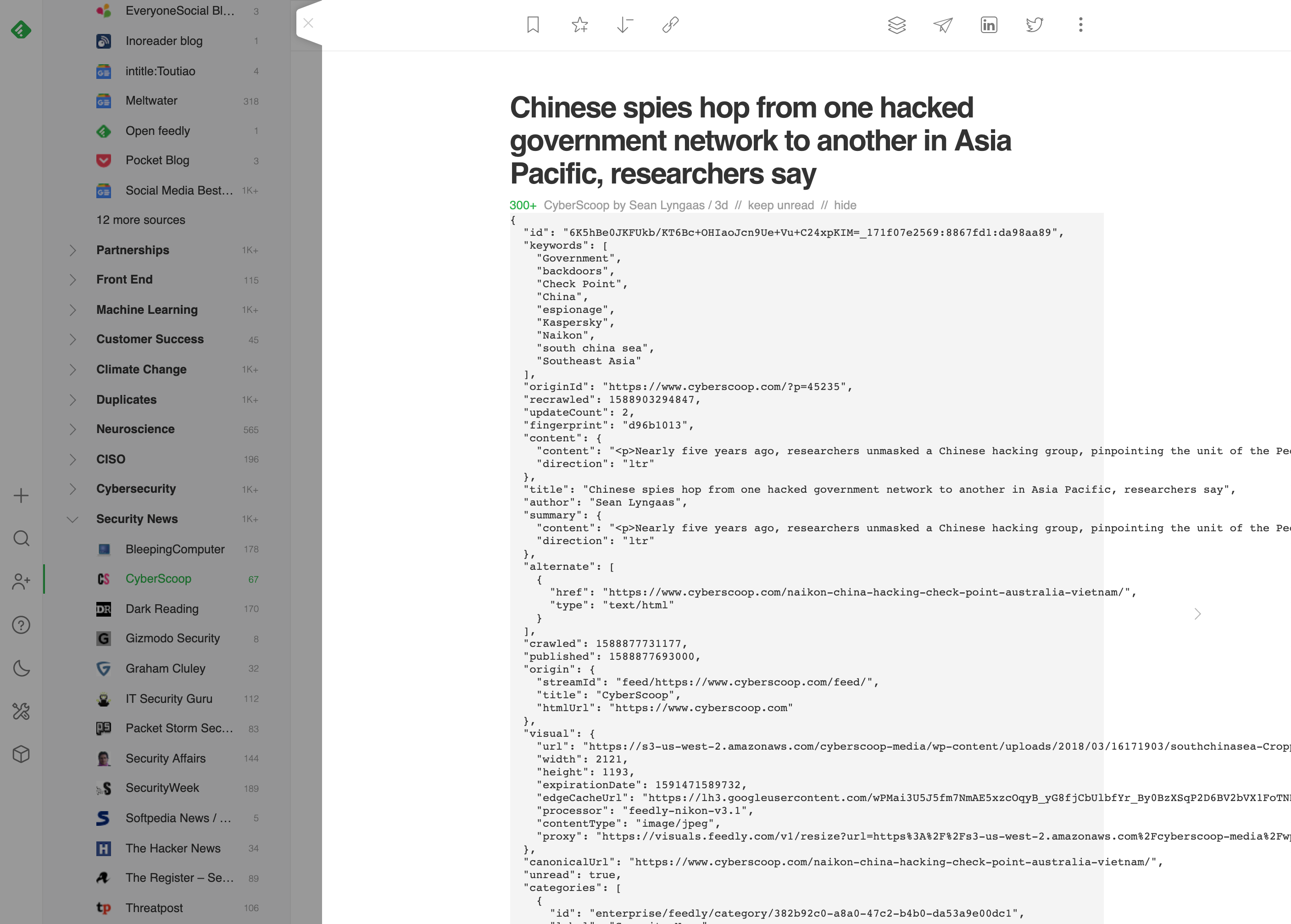
Accessing the content of your feeds
Let’s imagine that you have a “Security News” feed which contains a list of known and trusted security sources you want to follow.
The Feedly API allows you to query Feedly and ask for the last 100 articles aggregated in that feed. The articles are normalized in a JSON format which includes the title, the content, the source information, as well as all some cybersecurity metadata (CVE metadata, CVSS metadata, exploit information.
You can use the Stream endpoint to get the last 100 articles published in a feed:
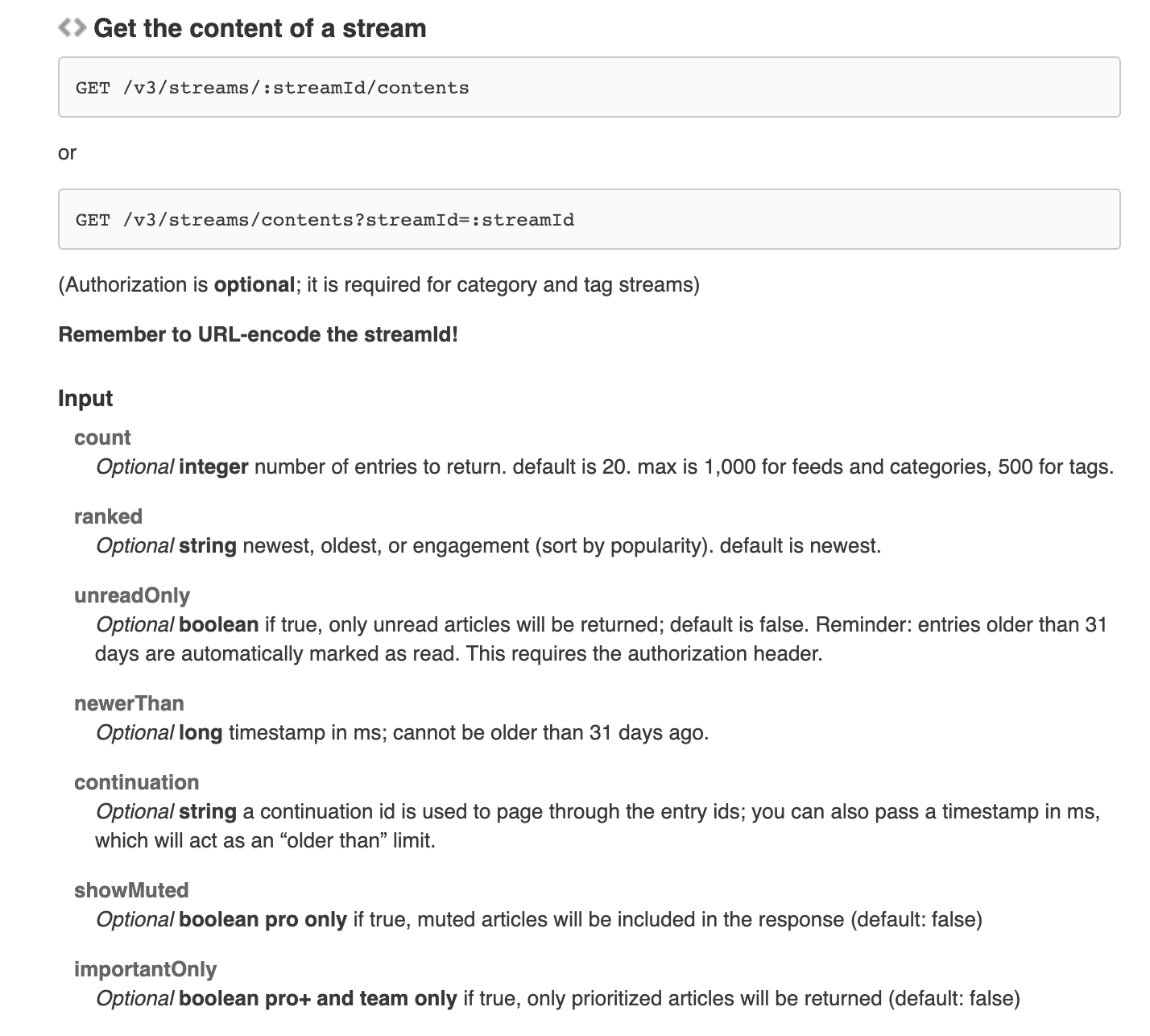
The most important parameter is the streamId. Each feed in your Feedly account has a unique stream id. When you select the feed in the left navigation bar, you see the streamId as part of the URL. The stream id is formatted as `enterprise/xxxx/category/xxxx` for team feeds and `user/xxxx/category/xxxx` for personal feeds.
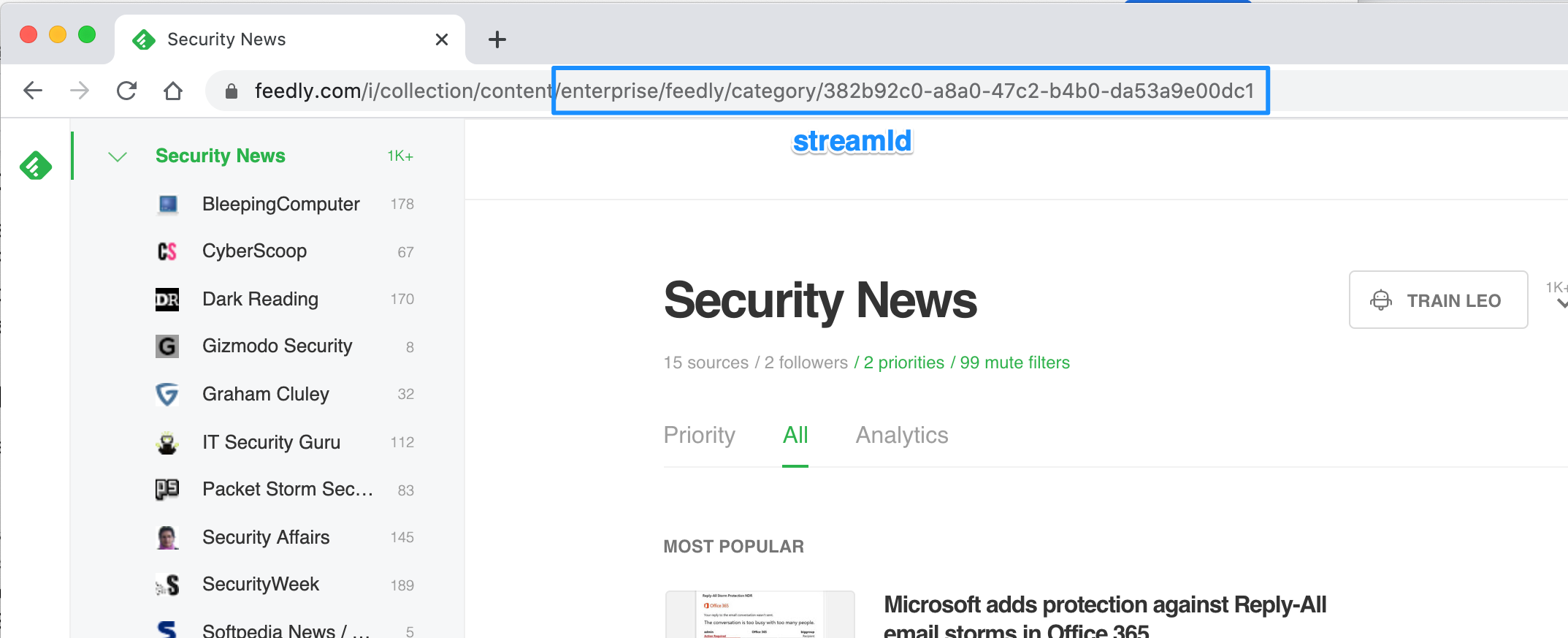
The count parameter defines the number of articles the server will return. We recommend that you select a number between 20 and 100. If you need access to more than 100 articles, you can use the continuation parameter returned by the response to chain the requests and ask for the next 100 articles.
Finally, the importantOnly parameter allows you to get the list of articles in the stream that has been prioritized by Feedly AI.
Troubleshooting tips:
- Make sure that the requests you are making are authenticated using the token you have received from the Feedly team.
- Make sure that the streamId is URL encoded when it is passed as a parameter to the Stream endpoint.
Accessing the content of your boards
Security teams use boards to bookmark critical articles everyone in the team should be aware of. They also often use boards to bookmark articles they want to share with other applications.
You can use the same Stream endpoint to access the last N articles manually bookmarked by your team to a board.
The only difference will be the streamId. Team Board streamIds are formatted as `enterprise/xxxx/tag/xxxx`. Personal Board streamIds are formatted as `user/xxxx/tag/xxxx`.
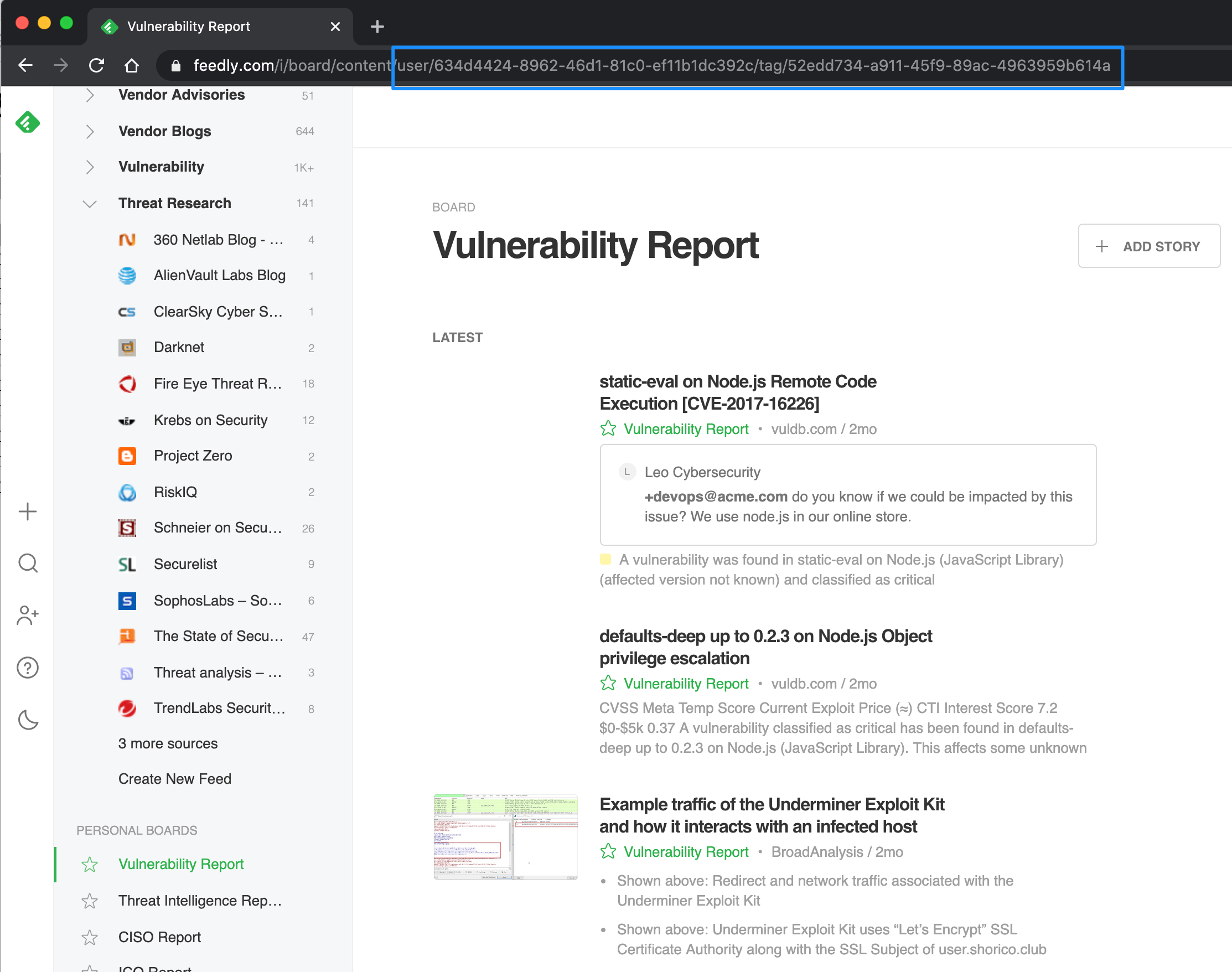
If users have annotated the articles with some notes and highlights while saving the article to a board, those notes and highlights will be included in the article JSON structure.
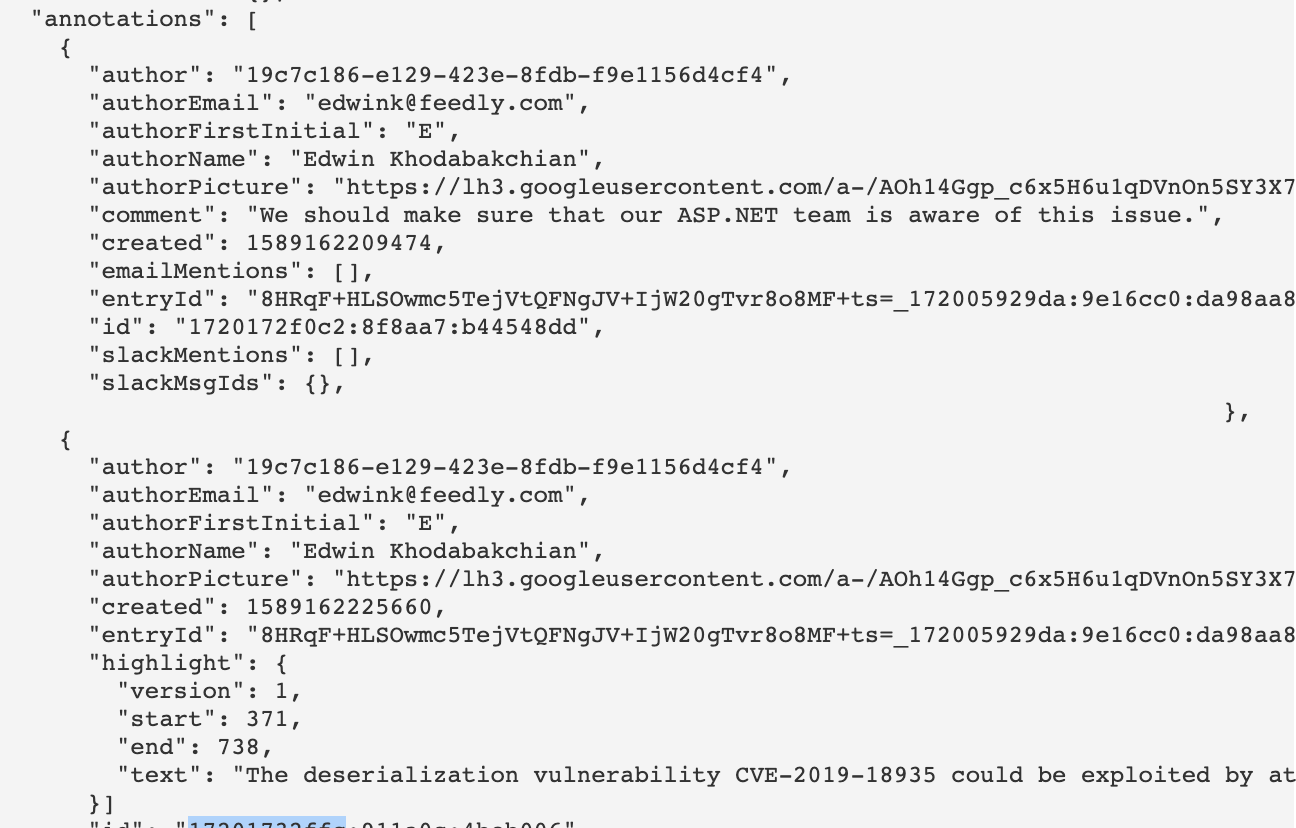
Example: Integrating Feedly with your ticketing system

Here is an example of how you can streamline the integration between the research and collection work of your threat intelligence team and the analysis and patching work of your operations team.
The research team creates a Feedly board called Critical Vulns where why bookmark articles related to critical vulnerabilities they want the operations team to be aware off and review.
Each time the research team finds a critical insight, they save that article in the Critical Vulns board, adding a note about why they think the vulnerability needs to be reviewed and patched.
Instead of asking the research team to manually create a ticket in your ticketing system (Jira, Service Now, etc.), you can write a small app which every 5 minutes connect to the Critical Vulns board, requests the last 20 articles bookmarked in that board, and for each new article, used the API of your ticketing system to create a new ticket. The app can enrich the ticket with the URL of the article saved in the board, the CVE information, and the notes and highlights from the researcher.
This is a powerful way to break the silos between your research team and your operations team and make sure that critical vulnerabilities are patched faster.
Pro tip: there is a simple solution to finding the new articles saved in a board. When your app processes a list of articles, it should save the first article in the list and the next time it uses the Stream Feedly app to get the latest articles bookmarked to a board, your app can use the newerThan parameter of the /v3/stream/content and pass that article id instead of a timestamp to get newer articles.
A lot more…
The Feedly web application and mobile applications are built on top of the Feedly API. This means that every piece of information available in the application and every action taken in the application is available in the API. For more information about the Feedly API, please visit the Feedly Developer Website (https://developer.feedly.com/).
Streamline your open-source intelligence
We are excited to see many security teams use the Feedly API to streamline their open-source threat intelligence process. Sign up today and discover what Feedly for Cybersecurity can do for you!
What's Your Reaction?
























